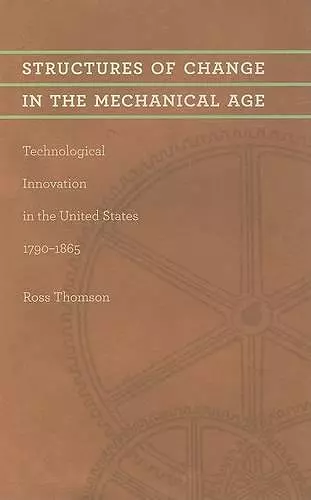Structures of Change in the Mechanical Age
Technological Innovation in the United States, 1790–1865
Format:Hardback
Publisher:Johns Hopkins University Press
Published:16th Jun '09
Currently unavailable, and unfortunately no date known when it will be back

One of the best characterizations of how technological change occurs that I have ever read. -- David Meyer, author of Networked Machinists: High-Technology Industries in Antebellum America
Thomson's impressive study of the infrastructure that fueled and supported the young country's economic and industrial successes will interest students of economic, technological, and business history.The United States registered phenomenal economic growth between the establishment of the new republic and the end of the Civil War. Ross Thomson's fresh study accounts for the unprecedented technological innovations that helped propel antebellum growth. Thomson argues that the transition of the United States from an agrarian economy in 1790 to an industrial leader in 1865 relied fundamentally on the spread of technological knowledge within and across industries. Essential to this spread was a dense web of knowledge-diffusing institutions-new occupations and industries, the patent office, machine shops, mechanics' associations, scientific societies, public colleges, and the civil engineering profession. Together they composed an integrated innovation system that generated, disseminated, and employed new technical knowledge across ever-widening ranges of the economy. To trace technological change in fourteen major industries and the economy as a whole, Thomson analyzes 14,000 patents, the records of two dozen machinery firms, census data for 1,800 companies, and hundreds of business directories. This exhaustive research leads to his interesting interpretation of technological diffusion and development. Thomson's impressive study of the infrastructure that fueled and supported the young country's economic and industrial successes will interest students of economic, technological, and business history.
Highly recommended. Choice 2009 A rich and detailed study of the early development of the American system of technological innovation... It is an important work and likely to become required reading for generations of scholars of the innovative process. -- Lisa D. Cook EH.Net 2010
ISBN: 9780801891410
Dimensions: 229mm x 152mm x 30mm
Weight: 726g
448 pages